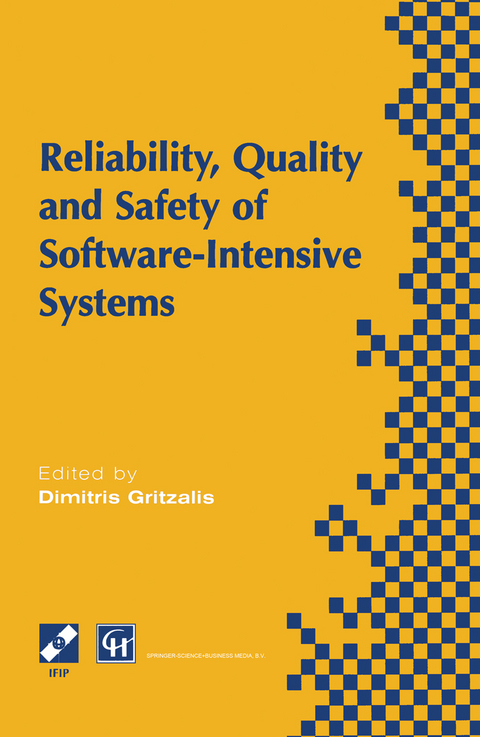
Reliability, Quality and Safety of Software-Intensive Systems
Chapman and Hall (Verlag)
978-0-412-80280-5 (ISBN)
One Software Testing.- 1 Pythia: A regression test selection tool based on textual differencing.- 2 Provelt: A C-program correctness prover.- 3 An assessment of the number of paths needed for control flow testing.- Two Software Quality.- 4 Automating software quality modelling, measurement and assessment.- 5 A quality-intensive approach to software development.- Three Software Reliability.- 6 User-perceptions of embedded software reliability.- 7 Motivated humans for reliable software products.- Four Software Reusability.- 8 Specification composition for the verification of message passing program composition.- Five Safety Critical and Safety Monitor Systems.- 9 Prescriptive specification checking for hazard prevention in computer-controlled safety-critical systems.- 10 Object-oriented safety monitor synthesis.- 11 Modification of safety critical systems: an assessment of three approaches.- Six Software-Intensive Systems Security.- 12 Selected Legal Issues Related to Internet Use.- 13 Security of World Wide Web search engines.- 14 The Cascade vulnerability problem for open distributed systems: a review.- 15 Improving the quality of secure distributed systems.- Seven Applications and Experiences.- 16 Partnership with customers in product improvement: testing embedded software products in the field.- 17 Introducing the Goal-Question-Metric approach to telecommunications software development practices: the PITA experiment.- 18 Software development and testing for shipyard robotic welding.- 19 Testing software based on users’ quality needs.- Eight Poster papers.- 20 An evaluation scheme of software testing techniques.- 21 Real-MFG: a Petrinet based model focusing on the integration of schedulability and fault tolerance.- 22 Design of an integrated educational softwaredevelopment environment oriented in reuse and quality assurance of products and processes.- 23 An approach to improve software quality in length measurement calibration.- Index of contributors.- Keyword index.
| Reihe/Serie | IFIP International Federation for Information Processing |
|---|---|
| Zusatzinfo | X, 278 p. |
| Verlagsort | London |
| Sprache | englisch |
| Maße | 155 x 235 mm |
| Themenwelt | Mathematik / Informatik ► Informatik ► Betriebssysteme / Server |
| Informatik ► Office Programme ► Outlook | |
| Mathematik / Informatik ► Informatik ► Software Entwicklung | |
| ISBN-10 | 0-412-80280-5 / 0412802805 |
| ISBN-13 | 978-0-412-80280-5 / 9780412802805 |
| Zustand | Neuware |
| Haben Sie eine Frage zum Produkt? |
aus dem Bereich


